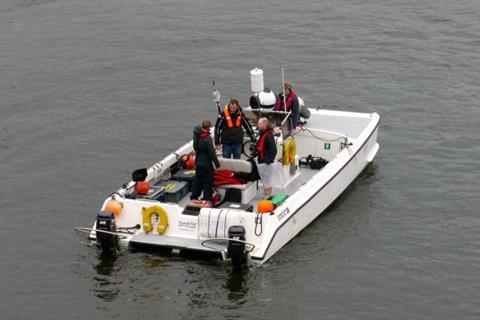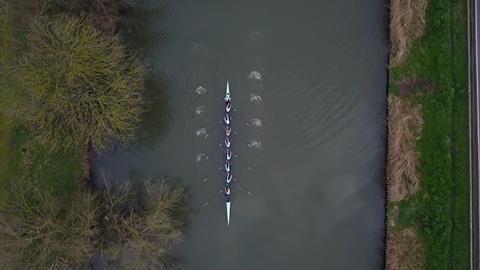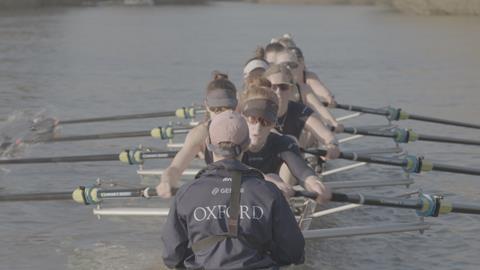EMG COO Bill Morris tells Broadcast Sport how the addition of drones, new production partner FilmNova, and more affected the 2022 Boat Race

The Boat Race returned to the Thames this year, after a year off and a year at the river Great Ouse due to the pandemic.
EMG chief operating officer Bill Morris spoke to Broadcast Sport about the challenges of returning to London for the event, as well as the first use of drones on the Thames course and working with new production partner FilmNova.
“The boat race is unique as it is the most technology and crew aimed at the shortest amount of sport,” Morris claimed. “You’re getting 24, 25 minutes of sport, but my goodness, what effort goes into that. And because it’s in the national consciousness as a protected event, as one of those a great events like the FA Cup Final or the Wimbledon final, it has a has an enormous audience and is still extremely popular.”
In the past this took hundreds of crew and multiple OB units to film, but one of the first innovations that EMG helped to bring this down to a much more manageable number: “We built an RF mesh, with various RF nodes, down the four and a half miles of the course to allow the 12 waterborne cameras to be synchronous and available at all times and all places. So, no requirement for switching between major outside broadcasts with 150 foot hoists and all the labour required with that all the way down the Thames.” This is then sent to EMG’s base on the day in Putney to be put together into a live feed.

With the total crew now down to between 50 and 60, controlling 37 cameras, and working with one helicopter. There had been two helicopters working on the race, but this has been reduced as for the first time on the Thames, drones were used to film the 2022 race. They had been used at the relocated race in 2021, but previously had not been allowed on the tidal section of the Thames due to the number of spectators on each bank.
“The PLA [Port of London Authority], having viewed how successful they were at Ely last year, relented and was extremely helpful in allowing us to have two drones flying over the race, up to Hammersmith bridge, and then from Chiswick bridge to the finish. That revolutionised the coverage this year.”
The drones took off and landed from a boat in the river, and brought another aspect to the broadcast that helicopters had been unable to.
“The helicopter gives you the geography,” Morris explained. “So that tells the story of the placement of the boats in the context of the geography of London, which is what we all love. It also gives you a very good geography shot which you can super graphics on and still make sense of the race.
“What the drone does, because it’s working to a much lower ceiling, is give you those bow shots, and of course it can do passing shots along the cruise. It can get you where we’ve never got before, and it can very quickly reposition to give you alternative shots.

“We still have the chase boat following the cruise that’s looking at the pain on the rowers’ faces. We have a 90-degree chase boat which is giving you the bow shots in the early stage of the race. Then the drone gives you fantastic opportunities in terms of being able to compose a shot that no one had ever seen before, such as an insight into the juxtaposition of the two boats from different angles. It was really breaking new ground and it was exciting for the viewer, but it was equally exciting for us. Sitting on the scanner we were bowled over by it as well, and it will never go back. That’s here to stay.”
In addition to drones, data is playing a bigger role in the broadcasts, with technology such as IP allowing for information to be gleaned along the whole course. Morris said: “We are refining that all the time. We can do things like have heart monitors on every athlete. So we know the heart rate of every athlete on the boat, and we now accurately know the stroke rate rather than having a BBC commentator counting it because of microswitches on the boats. We know where they are geographically because, of course, we have their exact geo position. Plus we’re able to build graphics showing the juxtaposition of the boats in graphic form. We’re able to capture so much more.”
These innovations were in part pushed by FilmNova, which took over production this time round during a busy year for the BBC Sport with the Winter Olympics, Commonwealth Games, and World Cup.

Morris enjoyed working alongside the new partner: “What we had this year was a lovely compromise. We had the director of the last few years, Micky Payne, directing the finish and he was the FilmNova consultant as well. So we had that continuity, but Matthew [Coliandris], the director at the start, brought a lot to the party. He brought his own ideas from his Olympic rowing coverage, and he was responsible for really pushing the drone agenda hard and pushing, actually, the envelope.
“He was questioning why the race was covered in a certain way, and sometimes these things need challenging. I think it worked. It was fresh coverage. It’s very difficult to reinvent things that have existed forever, but I think there was some reinvention this year and I think FilmNova enjoyed the process.”
Looking to the future, Morris admitted discussions are already taking place to go further, but there are some parts of the Boat Race that won’t be changing for a while: “For us on from the EMG. side, it’s all about where do we take it in terms of technology, and we take it into the Ethernet domain. We make it completely IP, we give the directors, producers, the editors the chance to bring every single facet back to one central gallery.
“However, having said that, we will still keep a truck at the finish for redundancy, but it won’t be fully populated. So we’ll be able to do it more efficiently. That’s the key.”





No comments yet